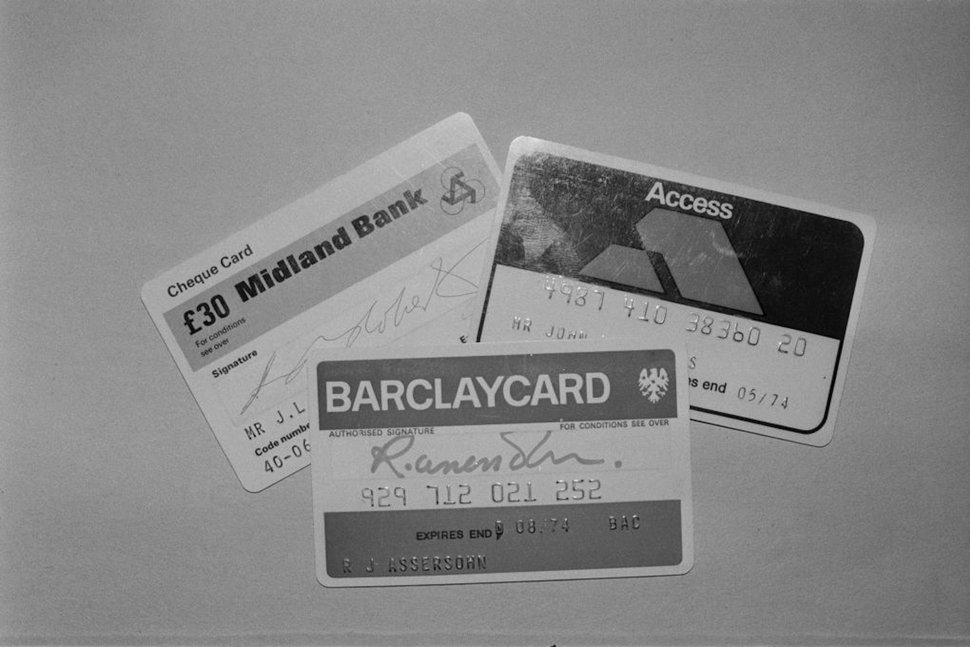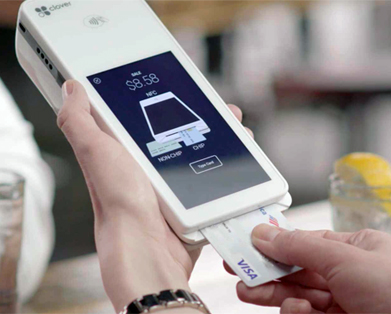CREDIT CARDS ARE SUCH A ubiquitous part of our daily financial life, it's hard to imagine a time before they existed. Today, there are more than 1 billion credit cards in the U.S., and about 70% of Americans own at least one card.
It wasn't always this way. Find out the history of credit cards – how and why they started, the main reasons for their growth, and the future of cards in the digital age.
When Did Retail Credit Begin?
The precursors to the credit cards of today were introduced in the 1950s, but the history of consumer credit arrangements dates back much further.
In the early 1900s, major department stores, such as Macy's and Wanamaker's, issued paper or brass tokens to their best customers, says Lendol Calder, history professor at Augustana College in Rock Island, Illinois. Customers could present the token to a clerk, walk out of the store with an item, and make the payment by the end of the month.
Wealthier customers often preferred not to use cash for purchases, Calder says. "The credit operation grew out of that service mentality."
In 1929, one-third of retail sales were financed. Credit sales constituted about half of total sales for stores that offered it, according to Bob Hunt, associate director of the Consumer Finance Institute at the Philadelphia Federal Reserve, in his working paper "A Century of Consumer Credit Reporting in America." Oil companies and hotel chains also made credit arrangements for customers.
Before credit cards, there was retailer and merchant credit," Hunt says. "This was a bilateral relationship between buyer and seller. The merchant carried and financed the loan and bore the credit risk. The merchant incurred the cost of collections and record-keeping."
When Were the First Credit Cards Developed?
Credit cards appeared after World War II, when a consumer spending boom spurred banks and retailers to find more options for the everyday financial needs of American families. By the early 1950s, the amount of installment loans increased by about 700%, according to Joe Nocera in his book "A Piece of the Action: How the Middle Class Joined the Money Class." Banks saw plenty of that business as people borrowed small funds to pay for appliances, back-to-school goods and vacation needs.
The first credit card is generally considered to be the Diners Club Card, which started in 1950 in New York City. The card (it was just cardboard then) caught on and grew to 10,000 members in the first year, with 28 restaurants and two hotels participating. It wasn't a traditional credit card, however, as the balance had to be paid off each month.
In 1951, Franklin National Bank in Long Island, New York, issued the first card that most resembles today's general-use cards. For the first time, customers could purchase items and pay them off quickly or be charged interest if the debt carried over. Participating merchants had to pay a fee for each card purchase.
By 1952, about 28,000 customers and 750 businesses signed up for the card. The concept started spreading that same year, when a bank in Michigan licensed the charge card program from Franklin.
In 1958, American Express responded to its customers' entertainment and travel needs by launching its first charge card. Members were charged a fee by American Express, and the company also collected a service charge from merchants who accepted the card. The card also became the first plastic charge card in 1959, and others followed soon after.
But in those early years, cards were still available only in a few select markets.
"Banks were reluctant to get into this type of credit because they didn't think it would be profitable," Calder says.
How Credit Cards Went National
The national credit card market that we're used to today – including national processing companies like Visa and Mastercard and banks that offer cards that can be used just about anywhere – has its roots in the late 1950s.
Bank of America's 1958 launch of its BankAmericard credit card was legendary. The California bank decided the best way to introduce its new product was to send mass mailings of the card to anyone who did business with the bank in a variety of cities. According to Nocera, the bank put about 2 million cards into circulation and 20,000 merchants signed up, but the launch cost Bank of America millions of dollars in fraud. Delinquencies – which occurred in about 22% of accounts – were also well above expectations.
"It was the Wild West in the early going," Calder says. "It was so bad that legislation was passed at a national level to prevent credit card companies from issuing credit cards for someone who hadn't asked for one."
More banks became interested in credit cards in the 1960s, including some that licensed the BankAmericard name. Mass mailings continued until the practice was outlawed in 1970.
Even though businesses might have balked at paying a fee of 2% or more per charge, Calder says they learned that customers will buy more on credit than they will with cash. "Meanwhile, customers had to be convinced it was a good idea to buy with a credit card instead of cash," he says. "Attitudes toward debt had changed quite a bit since the early 20th century, but there was still lagging suspicion, especially about a universal credit card."
But progress continued, and in 1966 a group of banks launched Master Charge (today's Mastercard). Four years later, the banks that had licensed BankAmericard created what eventually became Visa.
"Most credit card lenders issued cards to consumers in relatively small geographies," Hunt says. "The march to a concentrated national market of credit card issuers occurred over a 30-year period beginning in the 1970s."
Federal laws such as the Fair Credit Billing Act and the Truth in Lending Act essentially set nearly uniform rules about credit cards, which made it easier to create a national product, Hunt says. Also, a 1978 Supreme Court decision allowed banks to charge interest rates based on the state where the bank was located, not the rate in the customer's home state.
"That's important, because the curious thing about credit cards is that banks figured out consumers don't really care about interest rates," Calder says. "You could charge just about whatever you want, and the consumer wouldn't really notice."
Exponential Credit Card Growth
Credit card issuers found that they could make money not just on fees charged to merchants. Customers who didn't pay off their debts right away could also be a great source of revenue.
"They're going to make their money off people who hold a revolving balance and pay interest – that's what banks figured out in the 1980s," Calder says.
Some of the growth in credit cards can be attributed to the widening income gap that started in the early 1970s and continues today, Calder says. Middle-class families could thrive on one income in the 1960s, but that started to no longer be the case in the 1970s.
"Now there is a consumer need for increased access to credit," Calder says. "The credit card had a huge advantage over previous versions of credit like installment credit, and people flocked to it."
Retail-based cards – such as from major department stores – were the most commonly held cards in the early 1970s. Bank-issued cards exploded in popularity in the decades to come. Only 16% of U.S. families held a bank card in 1970, while more than two-thirds did in 1998, according to the Federal Reserve's Surveys of Consumer Finances.
While card issuers couldn't mail consumers credit cards without asking after 1970, they still aggressively marketed their cards. For example, the number of mailed solicitations reached more than 5 billion in 2001, a five-fold increase from 10 years earlier.
These marketing pitches often trumpeted changes that made credit cards more attractive in a competitive market, including: travel rewards and service, retailer discounts, cash back programs, low introductory rates, and low or no-fee balance transfers.
"Another important development in the late 1990s was risk-based pricing of credit cards," Hunt says. "Prior to this time, almost all credit cards had the same interest rate, and credit cards were available only to consumers with very clean credit reports. The combination of the saturation of the prime portion of the credit card market, the availability of credit scoring models, and recent automation at credit bureaus led lenders to offer credit cards to riskier consumers."
The Future of Credit Cards
The credit card market has leveled off recently for a few reasons, Hunt says, including the increase of student loan debt, market saturation and concerns about debt in the wake of the 2008-09 financial crisis.
The credit card market has not grown much in the last 10 years," he says. "As a share of all debt, it has actually fallen."
Consumers have more options, too. Debit cards, which deduct funds directly from a bank account, have become more popular in the last 20 years, Hunt says. "As a result, in the U.S. consumers make more purchases on debit cards today than they do using credit cards."
Consumers are also engaging more with financial technology companies that can provide loans digitally, which Hunt says has also taken some balances away from credit cards.
But credit cards are fully active in the digital world. Today, digital wallets can allow for contactless payments or card-not-present payments, such as through a website or app. Also, the increase in online shopping has caused card-not-present transactions to grow more rapidly than in-store transactions, Hunt says.
Credit cards have been around for 70 years. It's a safe bet that they'll be part of our financial lives for the next 70 years, too.
This article was originally published By Bob Musinski,
creditcards.usnews.com.










